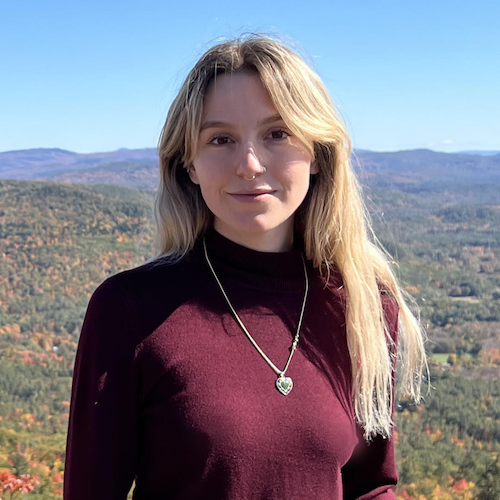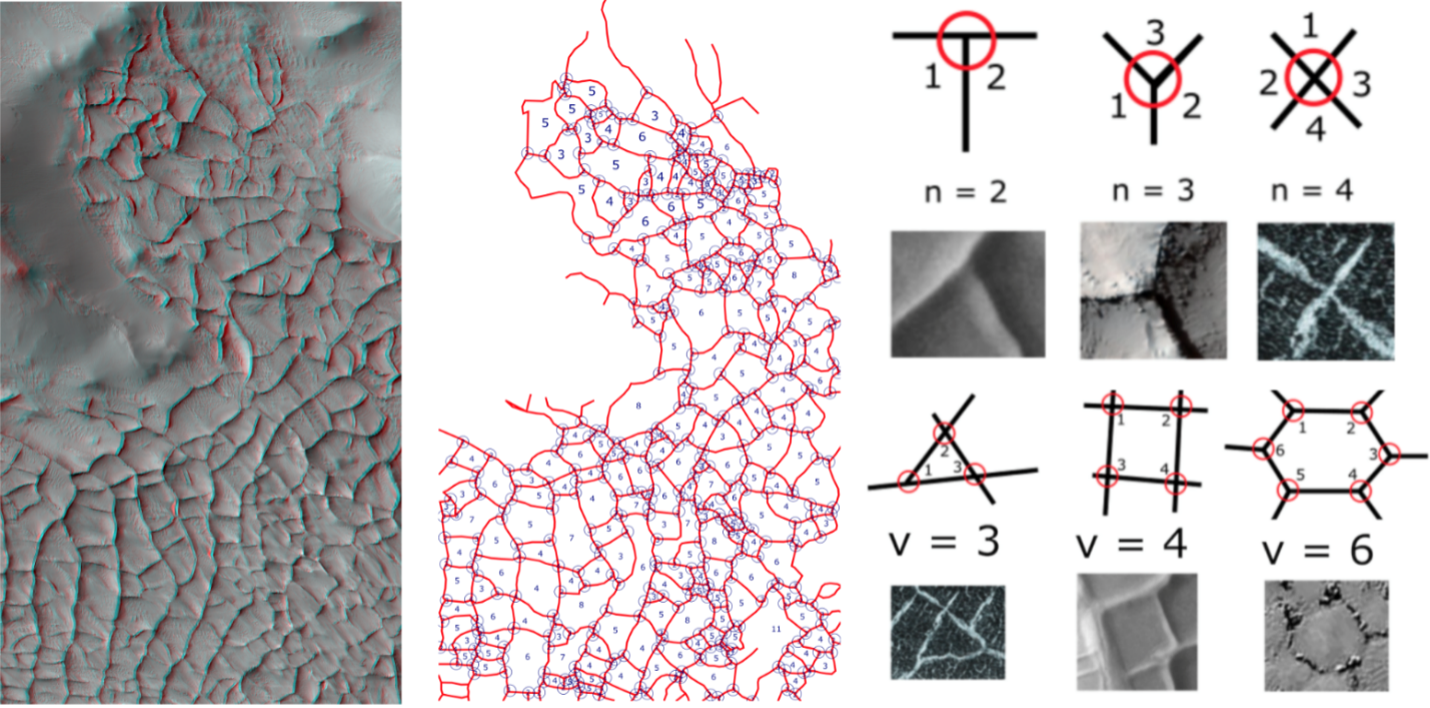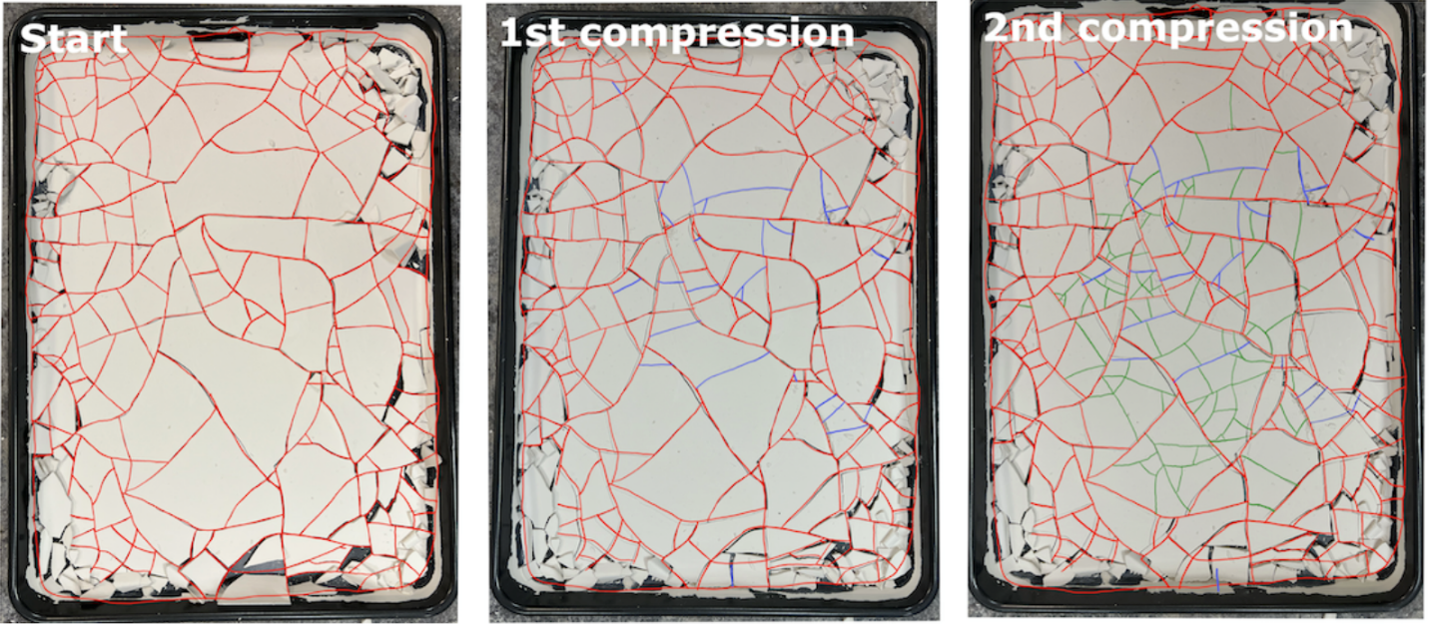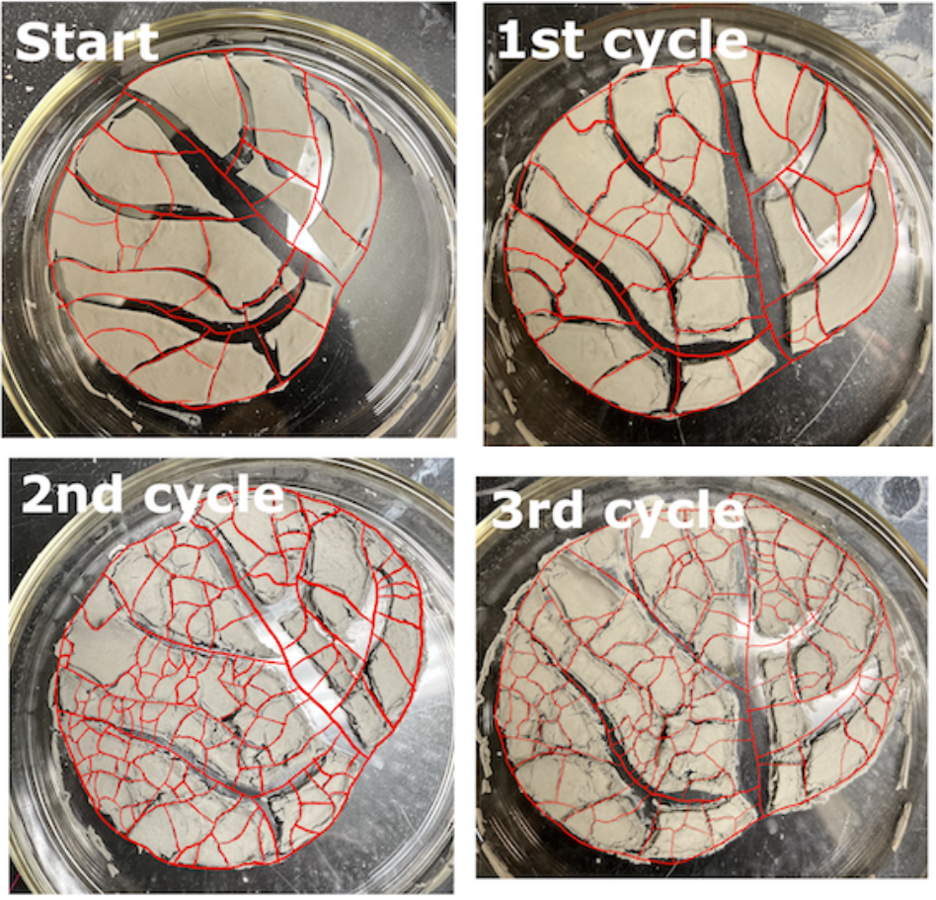Sophie Silver

Education
B.S., Geology, Temple University, 2019
Current Projects
- Planetary fracture analysis - Using the theory of convex mosaics, the fractured outer shells of planetary bodies can be quantified using two integer values, nodal degree and vertex degree. Nodal degree (n) denotes the number of corners to a given junction and vertex degree (v) indicates the number of corners to a given cell. These combinatorial quantities can be averaged over the entire network and indicate the degree of accumulated damage as well as the occurrence of resurfacing processes for a particular planetary surface. Currently this work addresses fracture mosaics on Mars, Venus, Pluto, and Europa with plans to expand this dataset to other terrestrial/icy planets and moons.
- Analog clay fracture experiments - Building on the implementation of the theory of convex mosaics for planetary fracture analysis, clay substrates serve as planetary shell analogs. A known force is applied to a clay substrate in order to induce secondary breaking or create cyclical volume change. This allows for changes in average nodal and vertex degree to be directly equated to an associated force imposed on the substrate. Experiments are being conducted to assess to what degree nodal and vertex degree can be used to extrapolate formation history from a static image.
Awards/Certifications
- IUGFS Field Camp Anadarko Scholarship (2018)
- Ahuja Graduate Fellow (2022)
- Penrose Conference Assist Fund (2022)
Conference Presentations
- Silver, S., Souders, K., & Davatzes, A. (2019) A Comparison of Spherule Diameter Measurement Techniques. Presented at AGU 2019 Annual Meeting, San Francisco, CA
- Silver, S., Regos, K., Domokos, G., Jerolmack, D. (2021) Counting Cracking Across the Solar System: How Fracture Network Topology Informs Process. Presented at AGU 2021 Annual Meeting, New Orleans, LA
- Silver, S., Regos, K., Domokos, G., Jerolmack, D. (2022) Counting Cracking Across the Solar System: How Fracture Network Topology Informs Process. Presented at PennRose PRF 2022 Meeting, Flat Rock, NC
- Silver, S., Regos, K., Domokos, G., Jerolmack, D. (2022) Evolution & Memory of Fractured Planetary Shells: Insights from Mud Crack Analog Experiments. Presented at AGU 2022 Annual Meeting, Chicago IL
Contact Information
- Please contact me by email: sosilver@sas.upenn.edu (edited)
Research Pictures (Selected)

Initial image is from Gordii Dorsum Ridge on Mars. Image is skeletonized and values of nodal and vertex degree are superimposed on the network. Right shows idealized drawings and examples of n & v values from real planetary images.

Secondary breaking trajectory experiments in kaolinite substrate: first image is a primary shock delivered to the system to induce primary breaking, second image is with 26kPa of top-loaded pressure applied, and third image is with 46 kPa of top loaded pressure applied.

Volumetric cycling experiments in bentonite substrate: first image is initial drying from complete suspension and each sequential image shows one additional wet/dry cycle induced with 20ml of DI water delivered via fine mist.